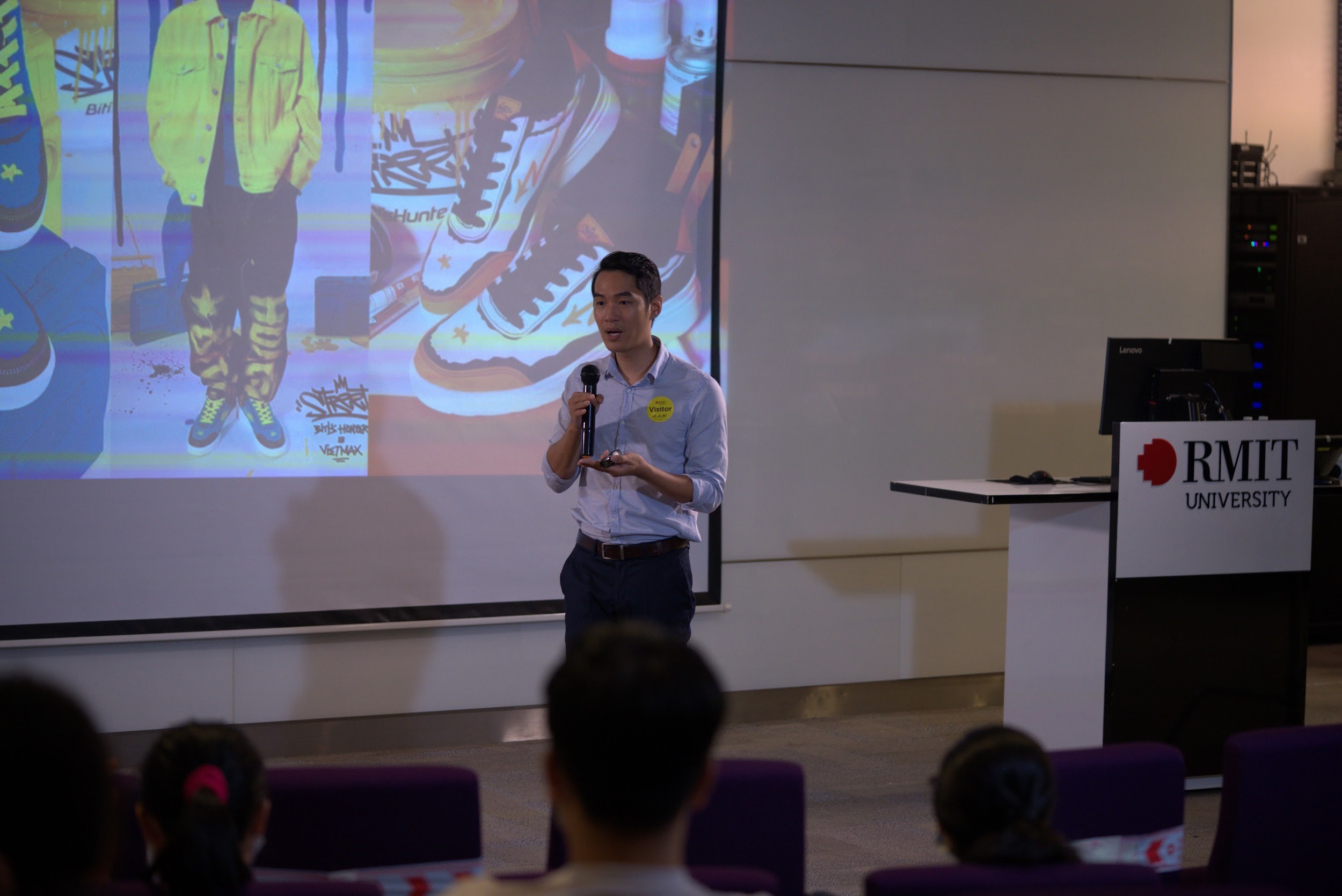E-commerce has gained tremendous popularity and become familiar to Vietnamese people in recent years. From an ambiguous technological concept nearly a decade ago, how did e-commerce proceed to secure its place in the life of young people?
Creativity in E-commerce: Right brain activated
E-commerce has gained tremendous popularity and become familiar to Vietnamese people in recent years. From an ambiguous technological concept nearly a decade ago, how did e-commerce proceed to secure its place in the life of young people? In a talk with Pham Thong – Marketing Director of ZaloPay, specific case studies of Vietnamese brands shed light on this phenomenon.

Fast-growing market
Vietnam has one of the fastest-growing market for e-commerce in Southeast Asia, with more than 68 million Internet users in a total population of 97 million, among whom 54.7 million people has engaged in e-commerce transactions, contributing to a growth of 8.52 billion USD in 2019 (We are social & Hootsuite, 2019).
To understand this rapid growth, let’s take a look at the statistics from Appota (2018): more than 72% of Vietnam’s population own smartphones, 68% use smartphones for Internet access (more than using computers), 25% use mobile Internet every day; and many own more than 02 mobile devices with Internet connection, with an average rate of 1.7 devices/person. On the other hand, the Global Consumer Insights Survey 2019 by PwC (one of the world’s Big Four accounting firms) for 27 countries/territories forecasted Vietnam as the fastest-growing market in terms of mobile transactions in 2019. The percentage of consumers making mobile purchases increased from 37% in 2018 to 61% in 2019, which was also the highest growth rate among 06 Southeast Asian countries in the survey.

While credit card payment increases at a slow pace, with more than 20 million accounts, the explosion in the use of e-wallet among Vietnamese users is obvious. Pham Thong stated that even though many e-commerce brands had joined the game early on, namely Tiki and Lazada, at that time, however, e-commerce appeared to be just a platform for product listing and display, and there was an extremely tough competition in the market between local brands (Tiki, Sendo) and those “backed” by giants (Lazada owned by Alibaba, Shopee with a network spanning across Southeast Asia). The growth of e-commerce platforms has led the way for several other digital markets, including e-payment. E-wallet and other payment platforms are not just the solution for transactions between buyers and sellers, for physical shopping, but also opened up a much larger market. Money transfer, bill and service payment – e-wallet offers endless possibilities, which is the reason for frequent usage. As of current, there are approximately 28 popular e-wallet services on the market – including Momo, ZaloPay, Airpay, Moca, ViettelPay – and the competition in the e-wallet market is even “fiercer” than that in e-commerce.

Creativity in E-commerce: Right brain activated
There is a big difference between Western and Asian shopping style. Amazon, for example, has always tried to eliminate redundancy, simplify processes and allow purchases in as few steps as possible. Yet take a look at the Asian market where Alibaba the giant reigns, the question posed is: right brain or left brain?
With the left brain, users are intelligent, logical, calculative, they weigh up the pros and cons of the product and use their reasoning to make decisions. Here, pricing, payment and delivery methods are up for scrutiny.
However, great packaging, vibrant commercials, catchy names, exciting music, and intriguing, creative games activate the right brain. Passionately and earnestly, they buy things because they want to – not because of prices, but other factors.

So then, when customers shop, which side of the brain do you want them to use?
Without a doubt, set-up, digitalisation, expertise, logistics, payment, shipping & delivery are essential, but in Asia, customers want more than that. If you want to get them excited, to make shopping experience fun and unique, to triumph over the market, to surpass other brands, you have to focus on other factors, the factors that could “activate” customers’ right brain side.
From that point of view, Pham Thong introduced three elements with real case studies from Vietnamese brands: music (video), design (art), and viral gamification.
MUSIC
Including brands in music videos (MV) is not a strange concept, but to implement it to the point of “hàng loạt” and “tràn lan”, it is impossible not to mention Tiki and its campaign TIKI accompanies Vietnamese Stars (TIKI đi cùng sao Việt).
On 4 January 2019, Tiki launched the campaign Tiki accompanies Vietnamese Stars with its appearance in an MV of famous underground artists Masaew and B-Ray. Perhaps Lady Luck smiled on Tiki accompanies Vietnamese Stars then, when the MV quickly rose to the top of Youtube Trending. Making hay while the sun shines, various key opinion leaders (KOL) made their appearance in the campaign, including Duc Phuc, Chi PU, Min, K-ICM ft. Jack, and many more, which such a frequency that young people joked: “If a video doesn’t have Tiki in it, maybe the singer is not so popular after all.”

It could be said that Tiki accompanies Vietnamese Stars was quite smart and fortunate in terms of “pick and choose”, as most of the artists Tiki was targeting are reputable KOLs with substantial influence over the community. According to a recent report by Youtube, Vietnam is one of its five major global markets. On average, a Vietnamese person spends more than 100 minutes per day on Youtube for entertainment, with music videos as the most popular content. Sponsoring MVs is not a strange practice in the industry, but the thorough manner with which Tiki implemented its “exclusive” campaign on a large scale had brought about exceptional efficiency.
Above all is cost efficiency. Tiki’s financial manager stated that in terms of return on investment (ROI), project sponsoring is 20 times more efficient than other forms of Youtube advertising. This is even lower than self-run advertising, and they didn’t even need to waste money on communications as once the videos are released, they (the stars) already have a large following who will play the videos on repeat to deliberately increase the view count. Thus the cost is lower in comparison to other common music videos with standard YouTube ads, and that is why Tiki is continuing this strategy.
Gradually, a new concept is taking shape in e-commerce: social commerce, where music, entertainment and videos are more than themselves, where human interaction is present in transactions, forming a connection between buyers and sellers through direct conversations. Here, it is impossible not to mention Facebook – the largest social commerce platform in Vietnam today. We can easily see the features that Facebook has been developing for e-commerce: product tags, marketplace, ads, automated responses, etc. Yet the race has just only begun when the platform’s livestream feature is utilised as an incredibly popular and effective selling method. When these unknown, micro business owners attracting numerous buyers through their live streams become a phenomenon, e-commerce platforms immediately join the game. Shopee, for example, already has a powerful feature that allows live chat with sellers, now includes live-streaming as a permanent component of the Shopee app. Compared to conventional selling methods, live streaming facilitates product introduction and addresses online buyers’ needs – to see the materials, sizes, and colours of the products. This model also lets businesses directly interact with their customers, and vice versa – buyers can pose questions and get immediate answers on products, price, delivery or use instruction. As a result, it is easier to create orders and generate a substantial pool of regular patrons.
DESIGN
Biti’s is a Vietnamese brand that generations of Vietnamese have grown up with (since 1982), familiar to parents and children alike for their product durability. However, Biti’s since long has been considered out of fashion, and unable to compete with international footwear brands also present in Vietnam. 2016 marked an impressive comeback of Biti’s with the newly launched product line Biti’s Hunter in an effort to connect with young people, focusing on the “sport-inspired” niche. This is a promising segment that is expected to grow exponentially in Vietnam thanks to its fashionability, convenience, and versatility. Not only successfully pinpointed the market trend, Biti’s Hunter also identified an extremely potential customer profile: young people aged 18-30. They are young, adventurous, like to experience and conquer. Yet more sophisticatedly, with clever marketing strategies such as the brand appearance in music videos of Son Tung MTP, Soobin Hoang Son, Biti’s has won over customers with their brand new designs, innovative and impressive advertising, and on top of all, pre-ordering – as Pham Thong pointed out. This move has helped Biti’s in calculating the market potential, and thus develop a smarter, cost-effective production plan that stays close to the ever-changing needs of the customers. Their campaign #ProudlymadeinVietnam with the message of Vietnamese supporting Vietnamese products, Biti’s is an excellent case study for other local brands, and it is still constantly innovating by launching limited editions of the Hunter line with other famous artists.
Pham Thong also mentioned The Coffee House and its smart app for loyal customers to change their behaviours – not only for coffee and drinks, various snacks and even mooncakes are also introduced in the app, accompanied by a campaign consisting of a short film and a photobook. The Coffee House is now considered the standard in smart product design and advertising with their own ecosystem, independent from e-commerce platforms.
GAMING + VIRAL
Also in this special seminar, Pham Thong brought up a concept that is becoming increasingly popular: shoppertainment – the combination of shopping and entertainment. This is a trend that was taking shape a decade ago, when the e-commerce platform Alibaba started the Singles Day online shopping event that takes place on 11th November every year. On this day, brands of all scales offer discounts of at least 50% across Tmall, Taobao, and other retail platforms of Alibaba Group. To have such big discount rates, Alibaba has to ensure sales for sellers. In order to achieve their business targets, Chinese “giants” decide to hold countdown events to promote festivals, combining with fashion – music shows with major celebrities. Users can, at the same time, watch the shows and purchase the outfits on stage. Brands also introduce numerous interactive games.
From China, this trend quickly spread across Asia, especially Southeast Asia. The use of games combined with experience to increase interaction and alter users’ habits and behaviours is called gamification – in this context, it means buyers can play games to earn points and use these points in their purchases.
As the Marketing Director of ZaloPay, Pham Thong specified the main motivators of gamification in capturing attention and getting a hold of customers, which are evident in the Heo Chieu Tai campaign with a game in which users collect points for lucky money on Zalo and other platforms. He shared that throughout the Tet holiday (Vietnamese Lunar New Year), the image of the Lucky Pig (Heo Chieu Tai) with its lucky ears, and game missions – hunting, raising, smashing – which contributed to the game’s success and attracted hundreds of thousands of users at the beginning of the lunar new year. By making transactions and sending lucky money through ZaloPay, users collected points to level up their lucky pigs and receive a voucher combo of up to 500,000 VND, corresponding to the pigs’ levels on the day of the God of Wealth. Users with the highest points can even receive the Golden Lucky Pig prize of 24K gold on the God of Wealth Day. Customers also had the chance to receive lucky money from actress-singer Minh Hang – ZaloPay brand ambassador on the lunar new year’s eve and new year’s day. This campaign had brought ZaloPay 400% growth in transactions and 20% users on both Zalo and Facebook, as well as four Mobila Marketing Awards (MMA) 2019 and a Global Award 2020.


With strong growth and tough competition, Vietnam’s e-commerce not only needs to meet strict requirements in systems, order management, payment, and delivery, it also needs to retain customers in a more exciting, thrilling, fascinating race: the race of creativity.
Written by Zelda
Graphics by Rongchơi
Translated into English by Đinh Vũ Nhật Hồng
Kindly credit VFCD 2020 when sharing the article.
Please do not copy or repost without permission.






























